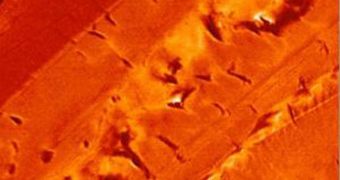A group of investigators managed to discover the existence of a molecular complex in fossils dating back to the Paleozoic period, which spanned between 542 and 251 million years ago. This was thought to be highly unlikely until now.
The researchers disproved conventional wisdom with this investigation. They showed that structural materials containing protein and polysaccharides, such as the chitin-protein complex, can endure for millions of years inside arthropod fossils.
Thus far, the oldest evidence of the complex was discovered in Cenozoic fossils. The Cenozoic period spans between approximately 65 million years ago, when the dinosaurs went extinct, and today.
Twenty-five million-year-old fossils from creatures that lived in this time frame were discovered to contain the molecular complex, and researchers believed that this is as far back in time as they could trace it. The new investigation shows that this assumption is wrong.
The oldest known structural proteins until now were some discovered in Mesozoic fossils, some 80 million years old. This time frame includes the Triassic, Jurassic and Cretaceous periods, when dinosaurs reigned supreme.
But now researchers at the Carnegie Institution for Science, led by senior staff scientist Gorge Cody, discovered arthropod fossils dating back a lot farther back than thought possible, and which contained the complex. Details of the work appear in the latest online issue of the journal Geology.
According to the group, the results of this investigation could have significant repercussions on the way we understand the organic fossil record, SpaceRef reports. The study team also included an international collaboration of researchers from around the world.
The group explains that arthropods contain the complex in their exoskeletons, which are made out of chitin fiber composites. This material is embedded in a protein matrix, but the issue is that this mix should not endure the attack of microorganisms for millions of years.
But a fossilized 310-million-year-old scorpion proved that to be perfectly possible. Subsequent analysis of a 417-million-year-old eurypterid (scorpion-like arthropod) proved the research was not flawed.
In their study, the researchers analyzed the absorption spectra of low-energy X-rays reflected by carbon, oxygen and nitrogen atoms in the fossils. The Advanced Light Source facility was used for this job.
The study found the chitin-protein complex to be a bit degraded, through chemical processes or maybe through partial bacterial degradation. In either case, the work proved that the complex can endure for prolonged periods of time.

 14 DAY TRIAL //
14 DAY TRIAL //